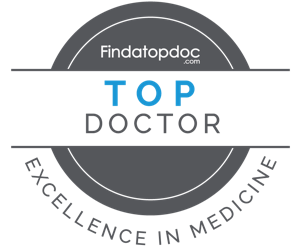Opioid Addiction And Prescription
Drug Abuse Treatment
Getting a Grip on Substance Use Disorder
When it comes to tackling opioid addiction and prescription drug abuse, understanding substance use disorder is key. Let’s break down what it is, its symptoms, and how it progresses, with a special focus on opioid use disorder (OUD).
What Is It and How Does It Show Up?
Opioid addiction is a type of substance use disorder. Think of it as a disease that needs proper treatment to manage effectively and reduce the stigma around it (Johns Hopkins Medicine).
Folks dealing with OUD often show signs like physical dependence, using more than they should, and having strong cravings. They struggle to control their opioid use, which messes up their daily lives.
How It Progresses and Its Impact
OUD isn't just a personal issue; it's a societal one too. Back in 2016, over 2 million people had OUD from prescription opioids, and nearly 600,000 were hooked on heroin. These numbers are climbing, leading to more lives disrupted and more premature deaths from overdoses and other complications.
The way OUD develops is complex, with different risk factors at play. Research shows a tangled web between using prescription opioids and ending up with OUD. We need more detailed data to figure out who needs the most help.
Grasping how OUD progresses and its impact helps us shape better treatment plans. At Overcoming Addictions LLC, we're all about using this knowledge to offer top-notch, patient-focused virtual treatment services that cater to each person's unique needs.

Treatment Approaches for Opioid Use Disorder
At Overcoming Addictions LLC, we get it—opioid addiction and prescription drug abuse need a game plan. It’s not just about one thing; it’s about screening, figuring out what’s going on, deciding what kind of care is needed, and managing those nasty withdrawal symptoms. Our treatment plans mix meds and therapy, giving you a full-on approach to recovery.
Medication Options
One big part of our treatment is using FDA-approved and WHO-recommended meds. We’re talking Buprenorphine, Naltrexone, and Methadone. Each one has its own perks, and our medical team will pick the best fit for you (NCBI).
Medication | What It Does |
Methadone | Cuts down withdrawal symptoms and cravings without giving you a high |
Buprenorphine | Targets brain areas hit by opioids, helping to restore balance and heal the brain |
Naltrexone | Blocks the high from opioids, making relapse less likely |
These meds, part of our Medications for Opioid Use Disorder (MOUD) approach, help ease withdrawal and cravings without the high. This makes the recovery journey a bit smoother.
Methadone, buprenorphine, and lofexidine target specific brain areas affected by opioids, helping to restore balance and heal during recovery. These meds don’t get you high and can be safely taken for months, years, or even a lifetime under medical supervision.
Naltrexone, another key player, blocks the euphoric effects of opioids, reducing the chance of relapse. You need to be off opioids for 7-10 days before starting naltrexone to avoid severe withdrawal symptoms (MedlinePlus).
Psychotherapeutic Methods
Meds are just one piece of the puzzle. We also use psychotherapeutic methods to help you understand your addiction, develop coping skills, and build a support network. Our team offers personalized therapy sessions, including cognitive-behavioral therapy and motivational interviewing, to meet your unique needs. Together, these therapeutic and medication approaches create a comprehensive treatment plan that aims to empower you to overcome addiction and lead a healthy, balanced life.

Overcoming Addictions LLC: Virtual Treatment Services
At Overcoming Addictions LLC, we get it—dealing with opioid addiction and prescription drug abuse is tough. That’s why we’re all about offering personalized, easy-to-access, and effective virtual treatment services.
Why Go Virtual?
Virtual treatment has some serious perks for those looking to kick substance use disorders. Here’s the lowdown:
- Easy Access: No matter where you are, our virtual services break down the barriers, making it simple to get the help you need.
- Flexible Scheduling: Got a packed calendar? No problem. Virtual treatment lets you book sessions when it suits you best.
- Privacy: If you’re all about keeping things on the down-low, virtual treatment offers a discreet and confidential way to get support.
- Consistency: No more missing sessions because of transportation issues. Virtual treatment keeps you on track with regular care and support.
What We Offer
Our virtual treatment services cover all the bases for those battling opioid addiction and prescription drug abuse. Here’s what we’ve got:
- Medications for Opioid Use Disorder (MOUD): We provide meds like methadone, buprenorphine, and naltrexone. These help ease withdrawal symptoms and cravings without giving you a high, making the recovery process smoother (MedlinePlus).
- Counseling Services: Whether you need one-on-one, group, or family therapy, we’ve got you covered. Counseling is a big deal in treating opioid addiction, offering support, guidance, and resources.
- Educational Resources: Knowledge is power. We provide resources to educate you about opioids, the risks, and how to recover.
By using technology, we aim to make treatment for opioid addiction and prescription drug abuse accessible, effective, and tailored to you. We’re here to support your transformation and walk with you every step of the way on your road to recovery.
Why Accessible Support Matters
Kicking opioid addiction and prescription drug abuse to the curb isn’t easy, but having the right support can make all the difference. We believe a solid support network can be a game-changer in someone’s recovery. Here, we’ll talk about two main sources of help: local community resources and national helplines.

Community Resources
In Canada, there's a treasure trove of community resources for folks dealing with substance use, including opioid addiction. These services cover everything from overdose prevention to quitting smoking and managing pain with substances.
For First Nation, Inuit, or Métis individuals, there are culturally sensitive programs like the National Native Alcohol and Drug Abuse Program and the National Youth Solvent Abuse Program (Health Canada).
The Canadian Mental Health Association also offers a Naloxone 101 Toolkit. This handy guide teaches you how, why, and when to use a naloxone kit, and where to get one for free (Health Canada).
And let's not forget the link between substance use and mental health. If you're dealing with mental health issues tied to substance use, there are support services ready to help (Health Canada).
National Helplines
National helplines are lifesavers, offering immediate help when you need it most. In Canada, if you're struggling with substance use, including opioid addiction, you can call 1-800-668-6868 or text 686868.
These helplines are available 24/7, connecting you with trained pros who can give you advice, support, and referrals to the right treatment centers and community resources.
Getting the right support, whether it's from local community services or national helplines, is crucial in tackling opioid addiction and prescription drug abuse. By tapping into these resources, you can get the help you need to start your recovery journey.
Tackling the Opioid Crisis
We’re on a mission to fight opioid addiction and prescription drug abuse. To do that, we need to get a grip on the bigger picture of the opioid crisis and the steps being taken to tackle it.
Policy Impact
One major move in the fight against opioids is the use of Prescription Drug Monitoring Programs (PDMPs). These programs keep tabs on the prescribing and dispensing of controlled drugs, aiming to cut down on misuse.
But, it’s a mixed bag. Studies show PDMPs have different impacts on overdoses involving prescription opioids versus synthetic ones. While strict PDMPs cut down on deaths and hospital visits from prescription opioids, they led to more issues with synthetic opioids. On the bright side, comprehensive PDMPs reduced Medicaid-funded hospital stays, ER visits, and opioid prescriptions, saving an estimated $155 million. (NCBI)
The success of PDMPs varies by state. In Ohio, mandatory PDMP laws led to fewer opioids and benzodiazepines being dispensed and fewer cases of patients getting drugs from multiple providers. Kentucky saw consistent results, unlike Tennessee, New York, and New Mexico. (NCBI)
Strategies and Interventions
PDMPs are a piece of the puzzle, but they haven’t changed most prescribing habits among healthcare providers. For instance, in New Hampshire, mandatory PDMP use didn’t affect opioid prescribing for elective surgeries and took up 15 minutes per patient. (NCBI)
The design and integration of PDMP data are also hurdles. Poor integration with clinical workflows and user-unfriendly systems make PDMPs hard to use. Delegated access could help, but it’s not widely practiced. (NCBI)
To really tackle the opioid crisis, we need a mix of policy changes, education, and innovative treatments. At Overcoming Addictions LLC, our virtual treatment services are here to provide accessible and effective support for those fighting opioid addiction and prescription drug abuse.
Future Innovations in Opioid Addiction Treatment
We’re living in a time where tech is shaking up every corner of our lives, and healthcare is no different. When it comes to tackling opioid addiction and prescription drug abuse, some pretty cool innovations are on the horizon. Let’s check out what’s coming up.
Cool Gadgets in the Fight Against Opioid Addiction
Lately, there’s been a boom in creating gadgets to help with opioid addiction. Think of devices that can predict if someone might get hooked on opioids, spot an overdose, dish out meds, or even offer pain relief without using opioids.
The FDA got a whopping 250 applications for their Innovation Challenge aimed at creating devices to prevent and treat opioid use disorder. They picked eight winners, and their gadgets are in the works.
Gadget Type | What It Does |
Risk Predictor | Spots if someone might get OUD |
Overdose Detector | Alerts when an overdose happens |
Med Dispenser | Hands out medication |
Pain Relief Device | Offers non-opioid pain relief |
These gadgets could be game-changers in preventing and treating opioid addiction.
FDA's Push for Innovation
The FDA isn’t just sitting around. They kicked off an innovation challenge on May 31, 2018, to speed up the creation of new medical devices, diagnostic tests, and digital health tools to fight the opioid crisis.
The goal? Stop opioid use disorder before it even starts. This is huge, especially since over 2 million Americans are dealing with OUD, with minority groups and folks aged 45 to 64 being hit the hardest.
These efforts highlight how important it is to have a bunch of different strategies to tackle the opioid crisis. Looking ahead, it’s clear that tech and innovation will be key in changing how we handle opioid addiction.


